NATURALLY, the people who ate their clam fritters within the low-anxiety zone surrounding the flying-saucer detector at Kap’n Klam, secure in the knowledge that there were no saucers in the immediate vicinity, wanted detectors of their own for home use.
The orders that came in from Kap’n Klam kept me busy, and they began to put a little money in my pocket, but the detectors didn’t bring me the calm that they brought to my customers. I developed a restless urge to devise and build the ultimate detector, a curse that kept me awake for a good portion of every night.
I developed a high-sensitivity model, the result of extensive research and development in my research-and-development department down in my basement, where I worked on the “folding table,” which was not a table that folded but the table where my mother folded the wash, which activity brought my research and development to a halt now and then. The only difference between the high-sensitivity model and the basic model was that the tolerances were tighter. Essentially, my detectors consisted of three parts: a switch, a power supply, and a warning lamp. On all models, the switch was a compass needle swinging within a circle of wire, but on the high-sensitivity model the circle of wire was considerably smaller than on the basic model, so that a smaller disruption of the magnetic field would light the detector’s lamp. I called this model the Magnetomic Distant Early Warning Saucer-and-Warhead Detector, and I tried charging three times the basic price for it, reasoning that the customers would recognize the value of the performance increase and be willing to pay for it. I was wrong. Sales were sluggish, and I didn’t understand why.
“It’s because it’s pretty much the same as the other two models you’ve got — the standard and the deluxe,” said Porky.
“But it’s a lot more sensitive,” I said.
“Doesn’t matter. It looks the same.”
“But the circle of wire is much tighter, and — ”
“Only you notice that. If you’re going to introduce a new model, you’ve got to have tail fins — dual headlights — push-button transmission — you know what I mean?”
“Yeah,” I said. I did know what he meant, but I couldn’t imagine what the flying-saucer-detector equivalent of tail fins, dual headlights, or a push-button transmission might be.
At that moment, a bayman named Danko walked in, carrying a deluxe detector.
“Here,” he said, pushing the detector at me. “Take the damn thing back. It don’t work.”
“It don’t?” I said.
“No, it don’t. You said it would help me sleep, but it’s got me awake all night.”
“How come, Dank?” asked Porky.
“I’m up watching it all the time,” he said.
Porky and I looked at each other.
“Well, somebody’s got to watch it,” said Danko. “Got to give the alarm if them saucer creatures decide to make a visit in the night while everybody else is asleep. That dim little lamp won’t wake nobody up, that’s for damn sure.”
“You’re right,” I said. “I’ll make you one that wakes you up, so you can sleep.”
The problem was, as I saw it, simple. Danko needed an audible alarm. So, I tried a simple solution, wiring a doorbell in place of the lamp, and it was not a success, because the doorbell needed more power than the single battery I was using. So I replaced the battery with a doorbell transformer and plugged the whole contraption into a wall socket. Then it worked, after a fashion. When I deflected the compass needle with a horseshoe magnet, simulating a saucer fly-by, a spark arced across the space and completed the circuit. The magnets in the bell drew the clapper toward them, and it struck the bell dome once. Then the jolt of the spark sent the needle swinging backward, and contact was broken. If I kept the horseshoe magnet in position, the process would be repeated again and again, but not rapidly enough to make the bell ring. Instead, it went clank, pause, clank, pause, clank, and so on. It might wake someone up, a light sleeper, but it wasn’t likely to, and it wasn’t something that lent itself to convincing demonstrations. People who saw the doorbell were going to expect it to ring, not clank.
I sought the advice of my grandfather, who could draw on a lifetime of experience in the construction of impractical gadgets.
“You need a relay,” he said.
Of course! I didn’t know what a relay was, and that fact alone was enough to make me sure that I needed one, since my work with saucer detectors and my friend Spike’s suggestion that she was probably the daughter of Mr. Yummy, the man who delivered baked goods door-to-door, had taught me that most of what I needed to know to make my way through life lay beyond the range of what I understood, out there in the endless darkness beyond the flickering light of the fire at the mouth of the cave.
[to be continued]
Subscribe to The Personal History, Adventures, Experiences & Observations of Peter Leroy
Share The Personal History, Adventures, Experiences & Observations of Peter Leroy
Have you missed an episode or two or several?
You can begin reading at the beginning or you can catch up by visiting the archive or consulting the index to the Topical Guide. The Substack serialization of Little Follies begins here; Herb ’n’ Lorna begins here; Reservations Recommended begins here; Where Do You Stop? begins here; What a Piece of Work I Am begins here; At Home with the Glynns begins here; Leaving Small’s Hotel begins here.
You can listen to the episodes on the Personal History podcast. Begin at the beginning or scroll through the episodes to find what you’ve missed. The Substack podcast reading of Little Follies begins here; Herb ’n’ Lorna begins here; Reservations Recommended begins here; Where Do You Stop? begins here; What a Piece of Work I Am begins here; At Home with the Glynns begins here; Leaving Small’s Hotel begins here.
You can listen to “My Mother Takes a Tumble” and “Do Clams Bite?” complete and uninterrupted as audiobooks through YouTube.
You can ensure that you never miss a future issue by getting a free subscription. (You can help support the work by choosing a paid subscription instead.)
At Apple Books you can download free eBooks of Little Follies, Herb ’n’ Lorna, Reservations Recommended, Where Do You Stop?, What a Piece of Work I Am, and At Home with the Glynns.
You can buy hardcover and paperback editions of all the books at Lulu.
You’ll find overviews of the entire work in An Introduction to The Personal History, Adventures, Experiences & Observations of Peter Leroy (a pdf document), The Origin Story (here on substack), Between the Lines (a video, here on Substack), and at Encyclopedia.com.

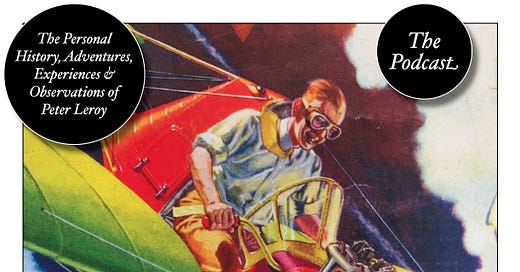



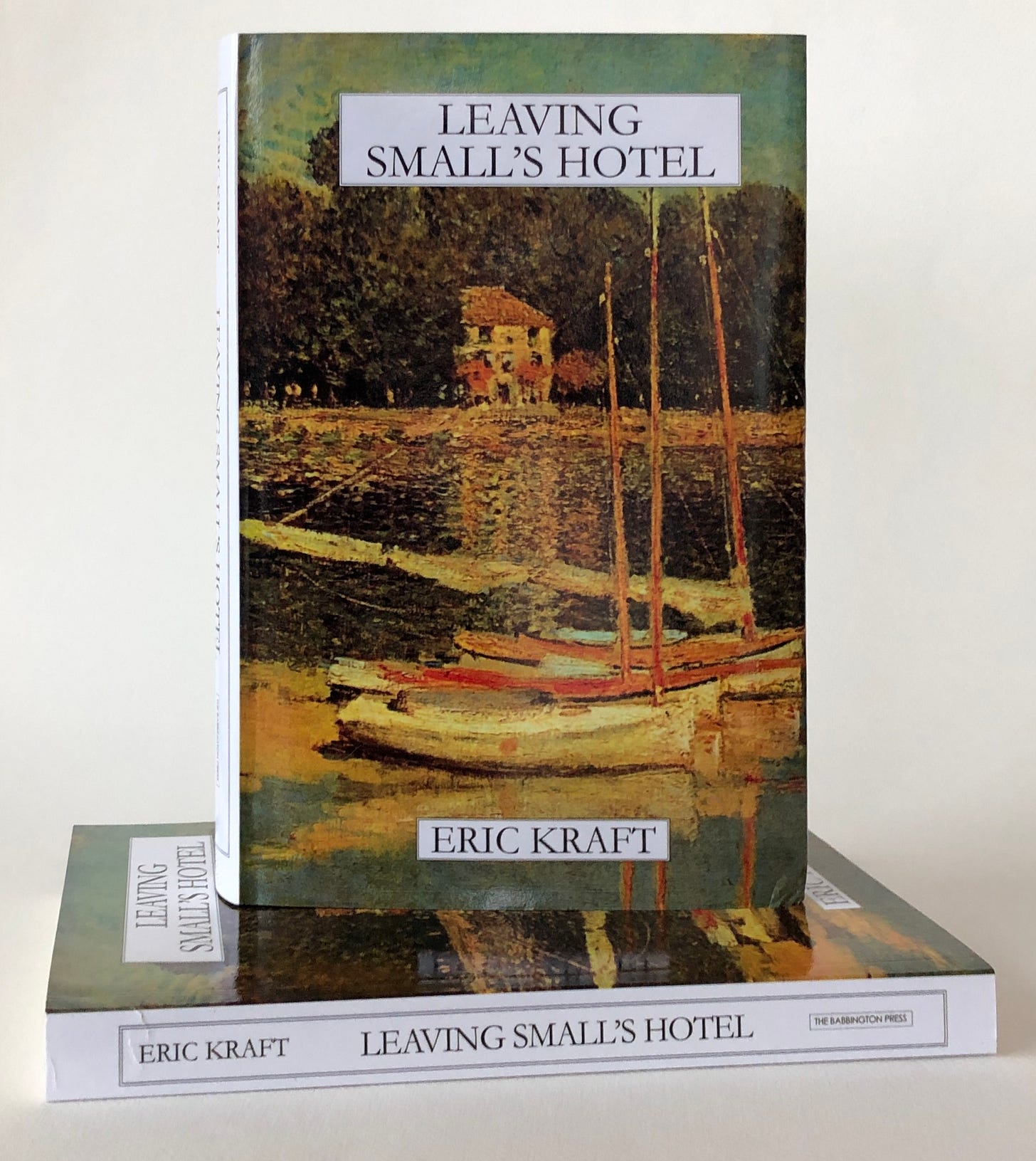


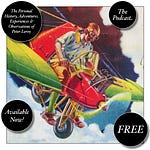



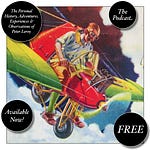
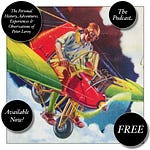
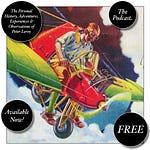
Share this post